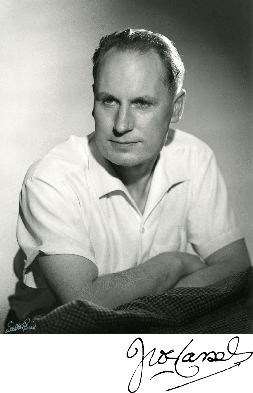J. W. S. Cassels facts for kids
Quick facts for kids
J. W. S. Cassels
|
|
|---|---|
 |
|
| Born | 11 July 1922 Durham, County Durham, England
|
| Died | 27 July 2015 (aged 93) |
| Nationality | British |
| Other names | Ian Cassels |
| Alma mater | University of Edinburgh (MA) Trinity College, Cambridge (PhD) |
| Awards | De Morgan Medal (1986) Royal Society Sylvester Medal (1973) Fellow of the Royal Society (1963) |
| Scientific career | |
| Fields | Mathematics |
| Institutions | University of Cambridge |
| Doctoral advisor | Louis Mordell |
| Doctoral students | Bryan John Birch José Felipe Voloch Victor Flynn |
John William Scott "Ian" Cassels (born July 11, 1922, died July 27, 2015) was a very important British mathematician. He was known for his work with numbers and equations.
Contents
About Ian Cassels
Ian Cassels went to school in Durham and Edinburgh, England. He then studied at the University of Edinburgh. He earned his first degree in 1943.
Working During World War II
During World War II, Cassels paused his studies. He worked at Bletchley Park, a secret place where codebreakers worked. His job was to help break secret codes used by the enemy. This was a very important role in the war effort.
His University Career
After the war, Cassels continued his studies at Trinity College, Cambridge. He earned his PhD in 1949. He became a fellow at Trinity College that same year.
Cassels taught mathematics at the University of Manchester for a year. In 1950, he returned to Cambridge as a lecturer. He became a Reader in Arithmetic in 1963. This was also the year he became a Fellow of the Royal Society, a big honor for scientists.
In 1967, he became a special professor of pure mathematics at Cambridge. He also led the Department of Pure Mathematics and Mathematical Statistics starting in 1969. He retired from his work in 1984.
His Work in Mathematics
Cassels studied many different areas of mathematics. He often focused on elliptic curves. These are special curves that are important in advanced number theory.
He also worked on the "geometry of numbers." This field looks at how numbers relate to shapes and spaces. He also studied "Diophantine approximation," which is about finding whole number solutions to equations.
Later in his career, he returned to studying elliptic curves. He wrote many papers that helped build the modern understanding of these curves. One of his most famous ideas showed that a certain group of numbers related to elliptic curves must always be a perfect square.
Cassels often used special methods to solve Diophantine equations. These are equations where you are only looking for whole number answers.
He wrote about 200 papers during his career. His advanced textbooks have been used by many students for decades. They are still important books for mathematicians today.
See also
- Cassels' conjecture
- Littlewood conjecture

